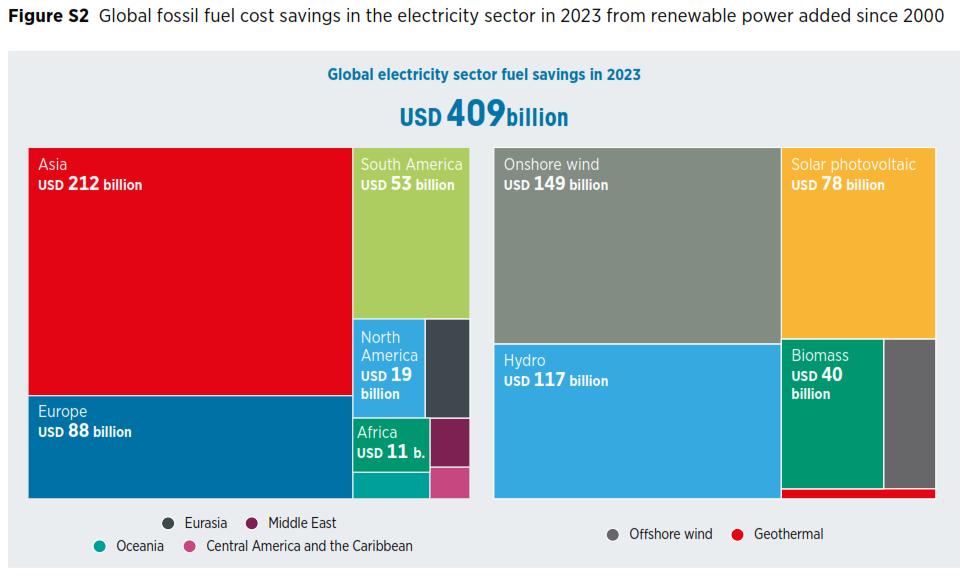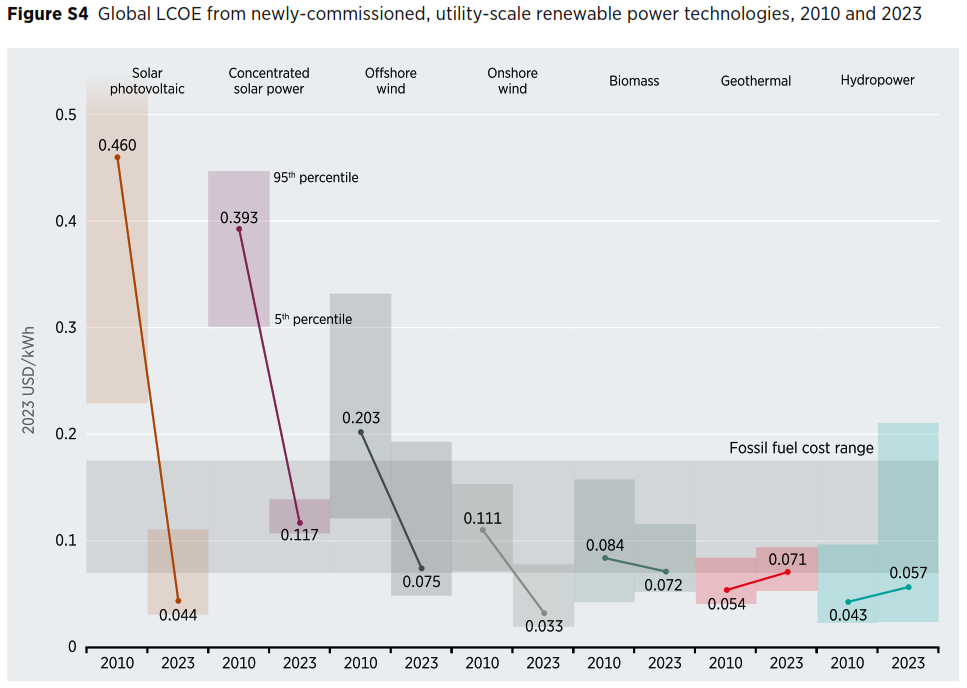The renewable energy sector has been on an extraordinary upward trajectory, and 2023 proved to be a landmark year. According to the International Renewable Energy Agency (IRENA), a record-breaking 473 GW of renewable capacity was added globally last year. What’s even more striking is that 81% of these new projects were more cost-effective than their fossil fuel counterparts, demonstrating just how viable renewable energy has become. This achievement offers a strong argument for tripling global renewable capacity by 2030.
Solar and Wind Power Lead the Charge
In 2023, solar photovoltaics (PV) and onshore wind made up the bulk of new renewable installations, contributing 95% of the total new capacity. Solar PV saw an impressive 346 GW increase, a 73% jump compared to the previous year. Onshore wind added 104 GW, growing by 48%. Offshore wind also had a good year, with 11 GW added, although this was below its record performance in 2021.
The growth in renewable capacity wasn’t spread equally across the globe. China led the way, contributing 63% of global solar PV installations and 66% of onshore wind capacity. This rapid expansion is due in large part to improvements in technology and a more robust supply chain, which have driven costs down significantly, even as fossil fuel prices have stabilized.
Renewables Are Cheaper Than Ever
The cost advantage of renewable energy is no longer up for debate. In 2023, the average cost of solar PV dropped to USD 0.044/kWh, which is 56% cheaper than fossil fuels. Just a decade ago, solar PV was over four times more expensive than fossil fuel-based power. Onshore wind has also seen significant cost reductions, with its cost dropping to USD 0.033/kWh—a 67% decrease compared to fossil fuel alternatives.
Between 2010 and 2023, renewable energy has saved the global power sector a massive USD 409 billion in fuel costs. Asia was the biggest beneficiary, saving USD 212 billion, followed by Europe at USD 88 billion, and South America with USD 53 billion in savings. Onshore wind alone contributed USD 149 billion to these savings, while hydropower saved USD 117 billion, and solar PV saved USD 78 billion.

The falling costs of technologies like battery storage are also worth noting. Between 2010 and 2023, battery storage costs plummeted by 89%, making it easier for grids to manage the intermittent nature of solar and wind power, further integrating renewables into the global energy mix.
The Road to Tripling Capacity by 2030
Despite 2023’s remarkable progress, there’s still a long way to go to meet the goal of tripling global renewable capacity by 2030. IRENA estimates that the world needs to hit 11.2 TW of renewable capacity by then, which will require adding an average of 1,044 GW each year. The bulk of this—8.5 TW—is expected to come from solar PV and onshore wind.
For this to happen, investments in grid infrastructure and energy storage will be critical. The sharp drop in battery storage costs and the addition of 95.9 GWh of storage capacity in 2023 alone highlight the importance of energy storage in enabling the smooth integration of renewables into the grid.

Policy Matters: The Role of Government Support
One key takeaway from IRENA’s report is the importance of government policies in driving renewable energy growth. According to Francesco La Camera, IRENA’s Director-General, long-term policy support has been instrumental in reducing costs and accelerating technology improvements. As a result, renewable energy has become a cost-effective solution for countries looking to reduce their dependence on fossil fuels.
Despite the volatility in fossil fuel prices, renewable energy’s consistency and cost advantages make it an attractive option for countries seeking to bolster their energy security and meet their climate targets. IRENA urges policymakers to align their national policies with the tripling target and to incorporate these goals into their Nationally Determined Contributions (NDCs) under the Paris Agreement by 2025.
What’s Next?
The path to tripling global renewable capacity by 2030 is clear, but it will require continued investment, innovation, and, most importantly, political will. The benefits of renewable energy are no longer confined to climate goals—they’re also economic, with billions saved in fuel costs and more resilient energy systems being built worldwide.
In short, 2023 was a record-breaking year for renewables, but it’s just the beginning. The next decade will be crucial in determining whether the world can fully embrace a sustainable, low-carbon energy future.

#SolarEnergy #RenewableEnergy #Sustainability #CleanEnergy #EnergyTransition #ClimateAction #GreenEnergy










